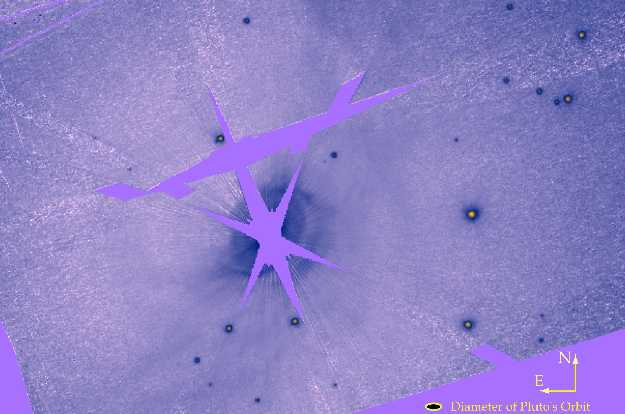Explanation: More than 100 billion boulders may be swarming in the disk around nearby star HD 100546. In a scene thought similar to the early years of our own Solar System, ever larger rocks are growing by colliding and accreting dust as the messy business of planet formation appears to be underway. For an Earth-like planet in such a hostile environment, the sky would be lit continuously with streaking meteors and the ground would rumble continuously with impacts. Pictured above, the swirling disk of dust, gas, and rocks of HD 100546 is visible as the dark region surrounding the image center. The bright light and six-pointed diffraction spikes from the central star have been removed from the false-color image. HD 100546 is visible with binoculars towards the southern constellation of Musca, and is a relatively nearby 335 light-years away. Similar planet-building systems, dubbed proplyds, have recently been found in Orion, where many emerging planets there must survive the boiling radiations of neighboring bright stars.
1999 2000 2001 2002 2003 2004 2005 2006 2007 2008 2009 2010 2011 2012 2013 2014 2015 2016 2017 2018 2019 2020 2021 2022 2023 2024 2025 |
Январь Февраль Март Апрель Май Июнь Июль Август Сентябрь Октябрь Ноябрь Декабрь |
NASA Web Site Statements, Warnings, and Disclaimers
NASA Official: Jay Norris. Specific rights apply.
A service of: LHEA at NASA / GSFC
& Michigan Tech. U.
|
Публикации с ключевыми словами:
планеты - Протопланетные диски - planetesmals - dust - planets - звездная пыль - планетезимали
Публикации со словами: планеты - Протопланетные диски - planetesmals - dust - planets - звездная пыль - планетезимали | |
См. также:
Все публикации на ту же тему >> | |
